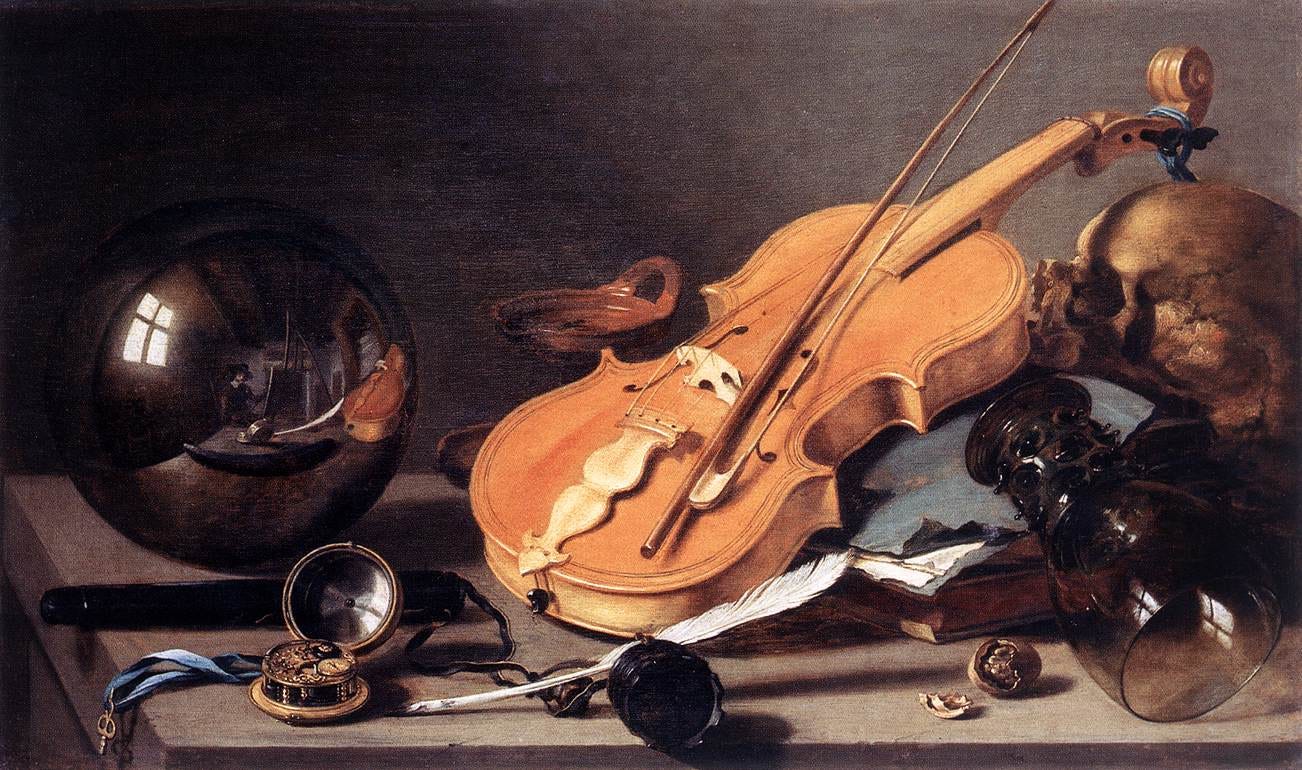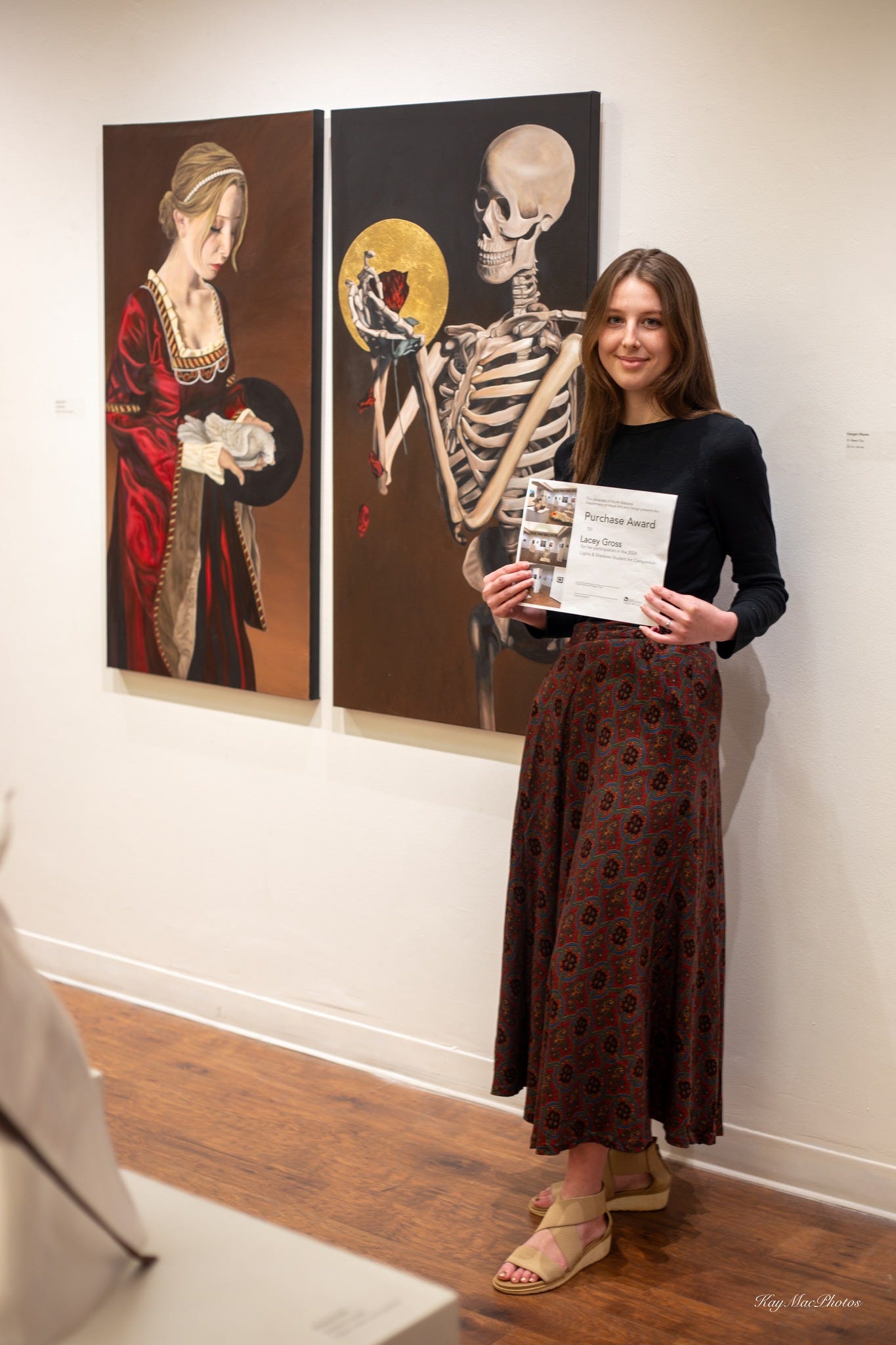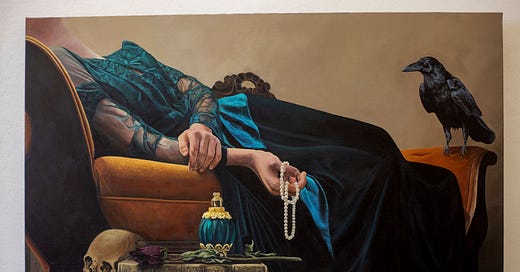"Remember you must die." These stark words, rooted in the Latin phrase memento mori, serve as a profound reminder of life's impermanence. While it may seem morbid at first glance, the concept of memento mori encourages us to embrace the reality of our mortality—to live more fully and intentionally. Complemented by its Latin counterpart carpe diem, which urges us to "seize the day," memento mori becomes a powerful tool for appreciating the present moment and making the most of our fleeting time on earth.
The origins of memento mori date back to ancient cultures such as Rome, Greece, and Egypt, where the awareness of death was an integral part of life. In Rome, victorious generals had slaves whisper "Remember you must die" in their ears during triumphal parades, reminding them of their mortality despite their success. During the Medieval and Renaissance periods, the concept evolved, becoming deeply intertwined with Christian teachings that emphasized the transient nature of earthly life and the importance of the afterlife. Religious art and literature often depicted scenes of death and judgment, reinforcing that life is temporary and should be lived with the awareness of its inevitable end.

In Art
The symbolism of memento mori has been richly represented in art throughout history. Common motifs include skulls, hourglasses and other timepieces, wilting flowers, and extinguished candles, all serving as reminders of life's brevity. Vanitas paintings from the 16th and 17th centuries are prime examples, showcasing still-life compositions filled with symbols of mortality and the futility of earthly pursuits. Artists like Albrecht Dürer and Hans Holbein the Younger also incorporated memento mori themes into their works, using detailed engravings and paintings to convey the somber message. In contemporary art, creators continue to explore memento mori, often blending traditional symbols with modern interpretations to provoke reflection on the nature of existence and time.
It’s not only artists from centuries ago who have an interest in such dark subjects. A 23-year-old painter from Collinwood, Tennessee, who attends the University of North Alabama is an award-winning artist who says her darker themes stem from a deep fascination with the human experience and our relationship with mortality.
“Growing up, I experienced my fair share of death, but it wasn’t until April 2019, when I lost my grandfather, that I realized what grief truly felt like,” says Lacey Gross, who is majoring in Fine Art with a Concentration in Painting and is pursuing an Art History minor. “During this period, I, of course, thought a lot about the concept of death and even began rationalizing the probability of an event like the raising of Lazarus, thinking that my grandfather might miraculously come back, too. Of course, he didn't, but this is when my attitude towards mortality shifted. A year later, during my time at Columbia State Community College, my late art history professor and mentor, Clifford Gordon, and I had many discussions about the concepts of memento mori and vanitas. These conversations highlighted the universal relevance of these themes, and given my experience of losing my grandfather, it sparked my desire even further to explore how an awareness of mortality can shift an individual’s outlook on life.”
Interestingly, before Gross turned to art, she planned to study forensics, with a focus on facial reconstruction using clay. “This background, along with my interest in preserving bugs and collecting bones, were additional elements that naturally drew me toward exploring themes of life, death, and decay in my art. Aesthetically, I am inspired by the atmospheric and haunting qualities found in works like Phantom of the Opera and Bram Stoker’s Dracula. The dramatic and mysterious aura of these works, combined with the macabre, achieves an emotional depth that I strive to capture in my own works. I want to create symbolic narratives that balance the eerie aspects of death with a sense of beauty and gentleness, provoking thought and reflection on the transient nature of existence.”

Just over a year ago, Gross won the Tennessee Valley Art Association’s Viewer’s Choice award for her work, Memento Mori, which she says was influenced by Edgar Allan Poe’s famous narrative poem “The Raven.” As Gross explains, “A raven appears as an embodiment of the inescapable reality of death to the grieving narrator, as well as the dark Romantic style and composition seen in works like The Nightmare by Henry Fuseli. The Italian Baroque painter Artemisia Gentileschi was an additional inspiration for her dramatic atmosphere and empowering representations of women and has significantly influenced many of my works.”
In Decor
Throughout history, memento mori elements have found their way into home decor, serving as constant reminders of life's transience. In historic homes, items such as skull-shaped candle holders, hourglasses, and other symbolic artifacts were common. Today, designers and enthusiasts incorporate these elements into modern spaces, creating an aesthetic that is both thought-provoking and visually striking. From minimalist skull sculptures to detailed wall art featuring traditional motifs, memento mori decor invites us to reflect on mortality and cherish the present. For those interested in personalizing their spaces, DIY projects like creating a memento mori-inspired collage or arranging a shelf with symbolic items can bring this profound philosophy into daily life.
In the home shared by my wife, Taryn Chase Jackson, and I, our mantel is often the site for essentially a memento mori still life. It offers flowers that will soon wilt and die plus various timepieces, a skull candle, other candles that eventually burn away, an incense burner often used at Catholic funerals, a salesman’s sample burial vault, and even containers holding our late dogs’ ashes. This mantel rises above our television, which sits on a vintage Art Deco coffin stand. Our living room has a few other vintage funeral home pieces, not memento mori specifically, but it all works toward an overall memento mori vibe. We even have a memento mori shower curtain in our bathroom. So what’s the deal with this obsession, you may ask?

Memento Mori and Carpe Diem: A Philosophical Duo
Personally and historically, memento mori reminds us of the inevitability of death, but by natural extension we are conscious of our daily choices. And from that standpoint, carpe diem encourages us to make the most of each day. Together, these concepts create a balanced philosophy: By acknowledging our mortality, we are driven to live more fully and authentically. This duality is reflected in literature, film, and philosophical works, where characters and thinkers often grapple with the tension between life's brevity and the urgency to seize the moment. Practically, embracing this mindset can involve setting meaningful goals, prioritizing experiences over material possessions, and cultivating gratitude for the present.
Incorporating memento mori into our daily lives can have a profound impact on how we perceive and navigate our existence. Acknowledging our mortality can prompt us to make more intentional decisions, focusing on what truly matters. Personal stories abound of individuals who have found clarity and purpose through this practice, whether by journaling their reflections, engaging in mindfulness exercises, or surrounding themselves with symbolic reminders.
Lacey Gross is one of those who has embraced the concept. “By acknowledging our mortality, we are encouraged to live more authentically; while it may seem bleak to confront the reality of our end, I view it as a more uplifting message. I feel that focusing on this concept over the past few years has shifted my perspective for the better, allowing me to deal with the grief I experienced when losing my grandfather and prompting me to appreciate the smaller moments in my day-to-day life that I did not take the time to acknowledge before.”

She goes a step further saying that she’s particularly excited about integrating an interest in entomology into her work. “I've recently begun raising Polyphemus moth caterpillars, documenting their growth and life cycle, and this experience has been incredibly inspiring. I see a natural connection between the transformative process of these creatures and the darker themes I explore in my art. Moving forward, I aim to create pieces that embody both the gentleness and inevitability of death, to capture a sense of peace within the macabre, and to portray it as an opportunity for new beginnings.”
Simple practices like starting the day with a reflection on impermanence or ending it with gratitude for experiences shared can ground us in the present and enrich our lives. By surrounding ourselves with the symbols and philosophy of memento mori, we can create a life rich with meaning and presence, always mindful of the preciousness of our time.
A version of this essay will appear in an upcoming print issue of theStudio Journal.




